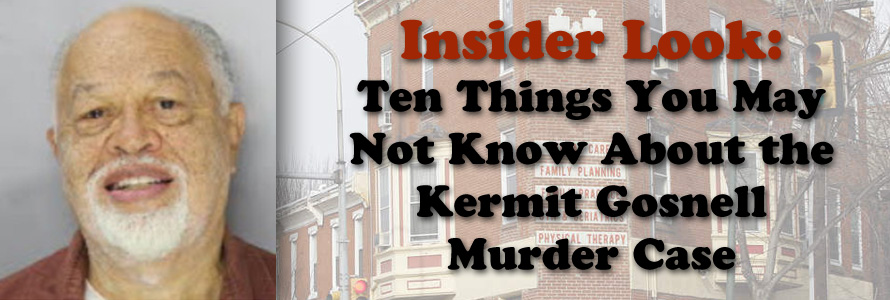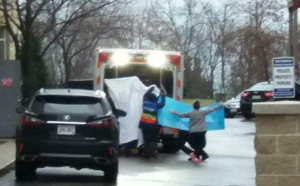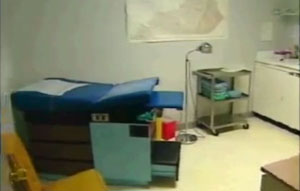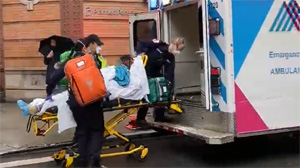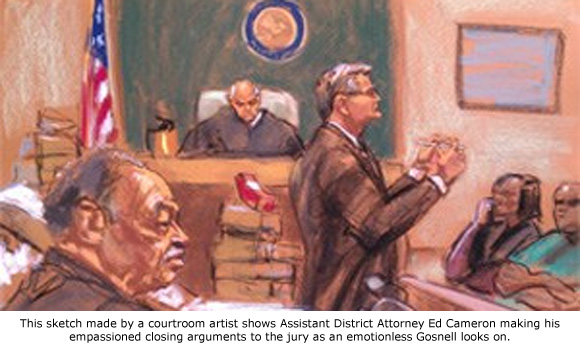
By Cheryl Sullenger
Philadelphia, PA – The release of the new movie “Gosnell: The Trial of America’s Biggest Serial Killer,” was a big success and has again brought to light the story of Kermit Gosnell’s murder trial and the depraved conduct at his West Philadelphia “House of Horrors” abortion facility.
I followed that case from the initial raid on his Women’s Medical Society in February 2010, and personally attended Gosnell’s trial in the spring of 2013. I told the story in my book last year, and offer you an insider look at ten important things you may not know about the Gosnell case.
1. Gosnell was originally charged with a shocking 395 criminal counts.
In addition to being charged with the First Degree Murder for several babies who were born alive, Gosnell was also charged with Third Degree Murder in the death of Karnamaya Mongar. He faced 33 counts of illegal late-term abortions and a whopping 310 counts of informed consent violations. Gosnell was charged also with several counts of solicitation of murder, conspiracy, drug violations, fraud, obstruction, tampering with evidence, and operating a corrupt organization. Details of all the charges can be found in the Grand Jury’s Presentment.
2. Gosnell was not charged with the deaths of every baby he murdered. Some murder charges were dismissed before they got to the jury.
 When police raided Gosnell’s ramshackle clinic, they discovered the bodies of 47 babies that had been packed in limeade containers and cat food cans then shoved into a freezer. Witnesses said that others had been ground in a garbage disposal, or flushed down the toilet until the plumbing clogged.
When police raided Gosnell’s ramshackle clinic, they discovered the bodies of 47 babies that had been packed in limeade containers and cat food cans then shoved into a freezer. Witnesses said that others had been ground in a garbage disposal, or flushed down the toilet until the plumbing clogged.
But even though prosecutors believed that Gosnell had murdered hundreds of babies that were born alive during abortions by stabbing them in the back of the neck with scissors and “snipping” their spinal cords, he was only charged with the murder of seven. Those were Baby Boy A, Baby Boy B, Baby C, Baby D, Baby E, Baby F, and Baby G.
During the trial, Judge Jeffery P. Minehart dismissed the murder counts related to Baby Boy B, Baby G, and Baby F. This was because there was insufficient evidence that these babies were born alive. A photo of Baby Boy B, who was estimated to be 28 weeks gestation, was included in the Grand Jury Report and tragically represented the grisly reality of the “snippings” that Gosnell used to end the lives of so many innocent children. It is unfortunate that his murder was never considered by the jury.
Gosnell was charged with five counts of Abuse of Corpse for the bizarre practice of dismembering aborted babies and keeping their feet in specimen jars on display in his abortion facility. No good explanation for this macabre practice was ever given in court. During the proceedings the defense objected during a discussion of these “trophies” and the prosecution offered to present the dismembered feet to the court. However, they were never entered into evidence. The reason these charges were dismissed remain unknown.
3. The “good” abortionist in the film was actually Charles David Benjamin, an abortionist who works for Planned Parenthood in Philadelphia.
Abortionist Charles David Benjamin was presented as an abortion expert over the objections of Gosnell’s attorney Jack McMahon.
Benjamin, a stocky, balding middle-aged man, stated that he is a Doctor of Osteopathy who trains residents as part of his staff duties at Albert Einstein hospital in Philadelphia. He was employed at the time by Planned Parenthood in Philadelphia. He admitted to having done 40,000 abortions over his 30 years in practice. He also stated that there had once been a patient death in his practice, although he said it was the fault of another doctor.
Benjamin testified he reviewed patient charts and discussed the drug digoxin, which is administered in late-term abortion cases to stop the baby’s heart in the womb before the extraction begins. This is to avoid any possibility of a baby being born alive. He said that the doses of digoxin that were administered to women at Gosnell’s abortion facility as noted in patient charts was 500 times the recommended amount. However, there was also evidence that no digoxin was used at all. The inference was that information in the charts was fabricated, and that Gosnell lied about the digoxin in the charts in case his true practice of murdering living babies was ever questioned.
4. Powerful closing arguments were made by experienced murder prosecutor Ed Cameron that brought lead prosecutor Joanne Pescatore to tears in the courtroom.
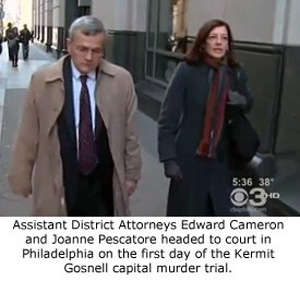 Assistant District Attorney Ed Cameron had a great deal of experience prosecuting murder cases. Even though he was not the lead prosecutor in the Gosnell case, it was he that delivered the powerful closing arguments that sealed Gosnell’s conviction.
Assistant District Attorney Ed Cameron had a great deal of experience prosecuting murder cases. Even though he was not the lead prosecutor in the Gosnell case, it was he that delivered the powerful closing arguments that sealed Gosnell’s conviction.
The defense had tried to portray the babies as merely “fetuses” that were not fully human, but Cameron debunked that notion as he made an impassioned argument for the humanity of those children.
At one point, Cameron dramatically turned to Gosnell and thundered at him, “Are you human?” then turned to the jury while pointing to Gosnell and said, “He’s the one in this case that doesn’t deserve to be called human.”
“Those babies didn’t have a chance,” he continued. “They couldn’t say ‘Let me live,’ except for one baby that whined.”
But perhaps the emotional apex of the trial came when lead prosecutor Joanne Pescatore, overwhelmed by the emotion of the moment, sat at the prosecution table and sobbed as Cameron continued to humanize Gosnell’s tiny victims.
Finally, he turned to the subject of late-term abortion patient Shanice Manning. Manning had been so far along – significantly past the legal limit in Pennsylvania – that she had been brought into the clinic through a side door so others wouldn’t see her. Manning admitted how much she regretted aborting her son.
“He would be six years old if he had lived,” Cameron stated. “I wish he could walk into this courtroom today and do the things that six-year olds do. Gosnell may not have been charged with his murder, but he killed him just the same.”
5. Gosnell’s victims were finally interred in a mass grave.
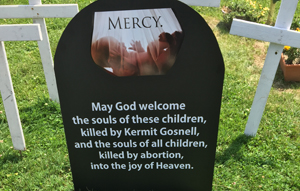 The 47 babies found at Gosnell’s abortion clinic languished in the Coroner’s office for months after their discovery. Nearly two years after Gosnell’s conviction, it was learned that the City of Philadelphia had cremated the remains and buried them in an unmarked grave at Laurel Hill Cemetery on September 12, 2013.
The 47 babies found at Gosnell’s abortion clinic languished in the Coroner’s office for months after their discovery. Nearly two years after Gosnell’s conviction, it was learned that the City of Philadelphia had cremated the remains and buried them in an unmarked grave at Laurel Hill Cemetery on September 12, 2013.
On June 10, 2015, a group of about 40 pro-life supporters held a memorial service for the babies. Flowers were laid at the grave and a temporary marker was placed. Fr. Frank Pavone of Priests for Life, who has named each child, is now promising to install a permanent marker at the grave site, so these innocent victims of abortion and murder will never be forgotten.
6. Gosnell employed two unlicensed workers who posed as fake doctors.
Kermit Gosnell hired Eileen O’Neal and Steven Massof to work at his clinic. Both were unlicensed medical school graduates who were referred to as “doctor.” O’Neal was actually tried with Gosnell, but there was little evidence that she participated in the abortions, although she was very aware of them. She was eventually granted a new trial then entered into a plea deal that ensured she would serve no jail time.
While O’Neal shunned the abortion side of Gosnell’s business, Massof had an insatiable curiosity about abortion and did all he could to involve himself in it. Soon, Massof was conducting late-term abortions on his own and admitted to “snipping” the necks of approximately 100 babies. Massof’s testimony was among some of the most disturbing heard during the Gosnell trial, and that is saying a lot.
7. Mental illness and addiction plagued Gosnell and his clinic workers.
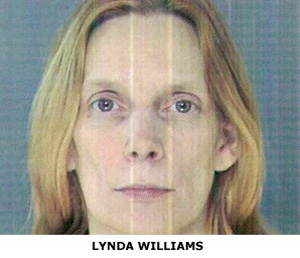 Gosnell and several of his workers were diagnosed with mental health issues such as such as depression, bouts of anxiety, and bi-polar disorder. Gosnell admitted his own mental illness in a poem he wrote that was released after his conviction in Steve Volk’s essay, “Gosnell Babies: Inside the Mind of America’s Most Notorious Abortionist.”
Gosnell and several of his workers were diagnosed with mental health issues such as such as depression, bouts of anxiety, and bi-polar disorder. Gosnell admitted his own mental illness in a poem he wrote that was released after his conviction in Steve Volk’s essay, “Gosnell Babies: Inside the Mind of America’s Most Notorious Abortionist.”
Lynda Williams, who was charged with murder for “snipping” the neck of Baby C, testified that Gosnell knew she suffered from bi-polar disorder when he hired her. She also suffered from an anxiety disorder, and depression that caused her to be heavily medicated with at least three kinds of drugs.
Sherry West, an untrained worker who over medicated women in labor, was diagnosed with anxiety disorder for which she was medicated with Prozac. She experienced a “nervous breakdown” due to her mental health condition and was essentially unemployable by anyone but Gosnell.
Elizabeth “Liz” Hampton, a foster sister to Gosnell’s third wife, Pearl, had testified she suffered from depression and anxiety in addition to alcohol abuse, and that she once had a “nervous breakdown.”
Through our research, Operation Rescue has documented numerous instances of mental illness among abortionists and abortion clinic workers. [Learn more about this in The Trial of Kermit Gosnell: The Shocking Details and What it Revealed about Abortion in America.]
8. Legal ownership of Gosnell’s abortion building remains in limbo.
Karnamaya Mongar’s daughter, Yashoda Devi Gurung, sued Gosnell for the wrongful death of her mother. She was eventually awarded $650,000 in compensatory damages, and $3.25
million in punitive damages, for a total of $3.9 million. But the family has had a hard time collecting.
Gosnell held no insurance on his abortion business, and despite owning up to twenty
properties and having made millions, Gosnell’s attorneys claim he has no assets. Meanwhile, Gosnell’s property holdings, including his deteriorating abortion office and his abandoned Mantua home, could be sold to pay a portion of the judgment, but so far, the properties remain in legal limbo.
UPDATE 10/25/2018: The Associated Press is reporting that Gosnell’s clinic building will be sold to pay “about $50,000 in delinquent taxes.” The sale could take place next year. Gosnell will have an opportunity to contest the sale at a hearing set for November 27, 2018.”
9. Only Gosnell and one of his co-defendants remain incarcerated.
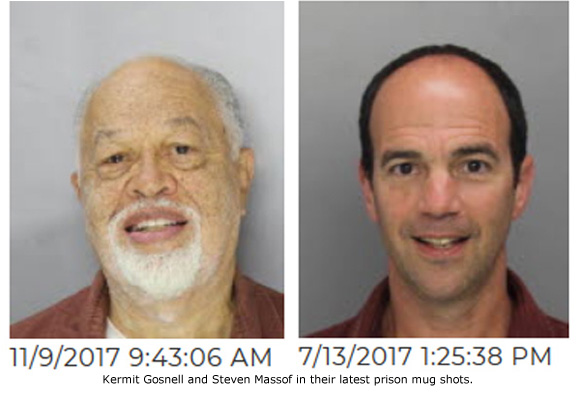
Gosnell’s murder convictions qualified as capital crimes. He was able to avoid the death penalty by making an agreement with prosecutors to drop all of his appeals in exchange for life in prison without the possibility of parole. This means Gosnell will serve the rest of his life behind bars. He is currently incarcerated at the State Correctional Institution in Huntingdon, Pennsylvania.
Steven Massof pleaded guilty to two counts of Third Degree Murder for killing babies that had been born alive at Gosnell’s Women’s Medical Society. He agreed to cooperate with the prosecution in exchange for sentencing leniency and testified against Gosnell at his trial. He received a sentence of 6-12 years in prison. He is currently incarcerated at the State Correctional Institution in Somerset, Pennsylvania.
10. Gosnell is not alone!
Elements of conditions and practices uncovered at Gosnell’s “House of Horrors” abortion clinic can be found in nearly every abortion facility in America.
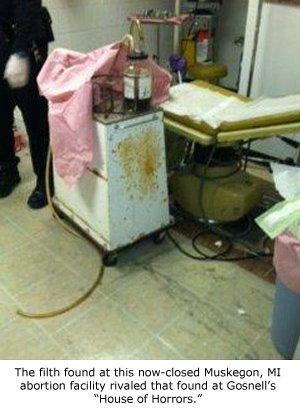 Just days after Gosnell was convicted, Operation Rescue released a report detailing information provided by former abortion clinic workers of another abortionist, Douglas Karpen, who they accused of killing babies born alive during late-term abortions in Houston, Texas. They provided photographic evidence to back up their claims. After years of trying to bring Karpen to justice, Operation Rescue was notified by the U.S. Department of Justice that the FBI had been tasked with investigating the allegations against Karpen. Final word on that investigation is pending.
Just days after Gosnell was convicted, Operation Rescue released a report detailing information provided by former abortion clinic workers of another abortionist, Douglas Karpen, who they accused of killing babies born alive during late-term abortions in Houston, Texas. They provided photographic evidence to back up their claims. After years of trying to bring Karpen to justice, Operation Rescue was notified by the U.S. Department of Justice that the FBI had been tasked with investigating the allegations against Karpen. Final word on that investigation is pending.
The Women’s Medical Society was characterized by squalor. While every abortion facility may not sink to the same disgusting level of filth, health inspection reports obtained by Operation Rescue clearly show that it is common for clinics to be cited for unsanitary conditions and practices, such as failing to properly sterilize surgical equipment or dirt build-up throughout the facilities.
Gosnell also used untrained and unlicensed staff, which is another common violation that health inspectors cite at abortion facilities.
Mental health issues are also found far too often at our nation’s abortion facilities as are patient injuries and deaths from shoddy abortion procedures.
The Gosnell case serves as an indictment of not only the abortion industry, but also of oversight agencies that too often turn a blind eye to abortion. Let us hope the telling of the Gosnell story will help give courage of regulators to prosecute abortion-related crimes, and determination to the American people to fight for the right to life for everyone until the day that abortion is finally ended in our nation.
Get Sullenger’s book, The Trial of Kermit Gosnell: The Shocking Details and What it Revealed about Abortion in America.
Insider Look: Ten Things You May Not Know About the Kermit Gosnell Murder Case
